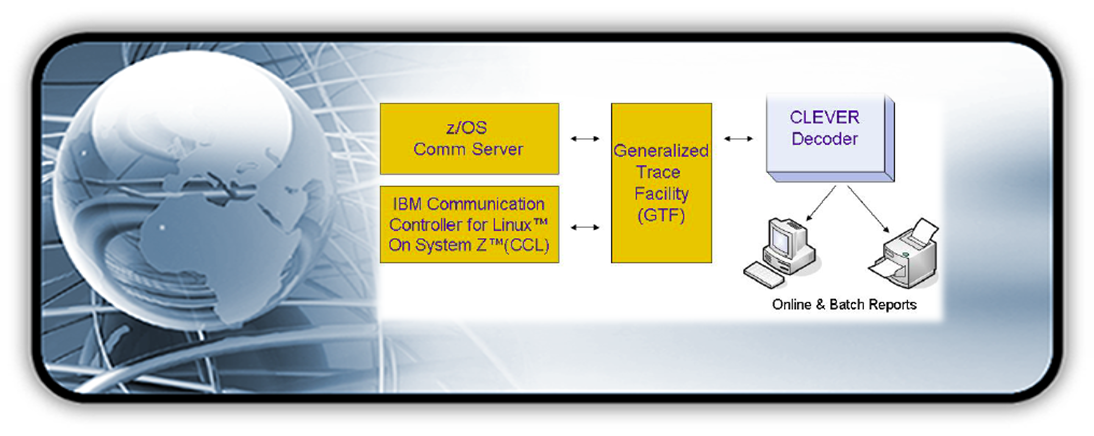Empowering Global Enterprise
Business Cloud Service and Security
Management

Still converting from SNA?
Check out CLEVER Decoder!
Hover On The Menu Items For More Info
Click On This Menu Items For More Info
- CLEVER Decoder
- Data filtering, consolidation, and interpretation for VTAM buffer traces and NCP line traces
- Automated Start/Stop capability for GTF traces
- The ability to break out parallel APPC sessions performance baselines
- Diagnostic capabilities for the 3745/3746 migration path
The ability to run Linux servers has increased the value of the mainframe in the role of server virtualization. IBM Communication Controller for Linux on System Z™ (CCL) provides a migration path off of 37XX hardware. Centralization and consolidation of SNA network applications on System z using CCL is just one example of Linux deployment, which also serves as an alternative to Enterprise Extender for the 37XX migration path.
Successful Business Service Management requires quick solutions and effective tools. CLEVER Decoder is an integral tool for network problem resolution. It drastically reduces the time system programmers spend on network problem diagnosis. It also accelerates your 3745/3746 migration efforts. In addition, CLEVER Decoder helps identify and alleviate embedded SNA layer traffic fault or flow problems, accelerating transaction performance and assuring that goals in production are being met.
- Current Release
- TraceView provides an interpretation of the important fields (in the manner of ACF/TAP) for all relevant SNA buffer trace records as they come into the Decoder batch run. The records displayed may be limited by setting options. The entire content of each record is provided in HEX and in EBCDIC where possible. Complete interpretations are available for TSC buffer trace records, Line trace records, and CSP/SIT trace records.
- The On-Line reports can be reviewed by the VTAM systems programmer in order to: − determine whether the trace inputs gathered are focused ones − examine what happened during the command flow when an error occurred − know what response time is like on the network − review error indicators with their associated timestamps, as well as any possible hardware and/or software mismatches.
- The APPC Session Report, a critical tool for diagnosing and tuning all APPC applications, breaks out logical sessions from multi-threaded, parallel LU 6.2 session data, providing detailed information about session flow and command exchanges.
- Intelligent data filtering allows massive quantities of data to be filtered into usable reports by node name, date/ time, APPC session, or grouping, for quick diagnostic needs.
- To assist in problem diagnosis, CLEVER Decoder provides the means to issue DISPLAY, MODIFY, and VARY VTAM commands.
- The Trace Start/Stop Time report helps determine whether the trace inputs gathered are focused ones, showing the type of trace and its duration in terms of starting and ending times for the problem node.
- The Sequence of Execution report reveals the command flow, their contents, and where the process ended by showing the flow between primary and secondary nodes in the network and the SSCP. The conversation flow between the SNA and SDLC commands is also shown.
- The Transit Time Distribution report provides a breakdown of response times for: VTAM inbound, application, VTAM outbound, and the network time (with the DR time). It allows the VTAM systems programmer to know the VTAM queue time vs. the application queue time as well as the total network time estimation.
New features in CLEVER Decoder v4.0 include the following:
Why CLEVER Decoder
Product longevity
Rich function
TRACEVIEW
Transit Time Distribution Report
Intelligent Data Filtering
Response Time Distribution Report
- Downloadable Material
- Technical Details
CLEVER Decoder Architecture

CLEVER Decoder System Requirements
z/OS V1R1 or above





